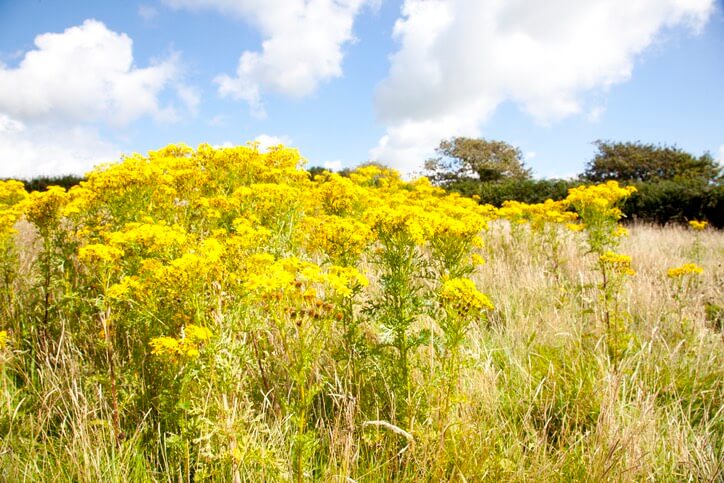
Sadly, many paddocks are infested with weeds and toxic plants that reduce the grass coverage and can cause harm to grazing horses. This is typically a management problem – if people are renting their paddocks they have little or no say in how well they are kept – or perhaps through ignorance of the amount of effort that is required to keep grass growing properly.
All paddocks need regular soil testing, appropriate fertilising (which also inhibits growth of certain weeds), harrowing (to put back some of the nutrients extracted by horses as organic matter) and spraying for weeds and toxic plants.
As we have had a very dry summer and early autumn, horse paddocks are at higher risk of invasion by noxious plants. Horses are notorious for scuffing up the turf, leaving open areas of soil that weed seeds readily grow in – hence equine paddocks are associated with being weedy and poor quality. As much has already been written about ryegrass staggers, I will focus on other pasture dangers that are out there.
There are several grass and broadleaf species which are found in horse paddocks that are unsuitable for livestock consumption. These can be split into two sections, the first whereby the problem is linked to fungi growing on or within certain plants, and the second being those that naturally produce compounds that cause problems.
Let’s start with clover – which horse owners often love to feed. However, care must be taken with clover intake as it harbours a fungus that produces a toxin called slaframine, manifested as black slimy mould which is especially noticeable when clover is cut for hay or silage. This causes a disease called ‘slobbers’ whereby the horse loses large amounts of liquid from its eyes and mouth and via excessive urine production and diarrhoea. The horse may also have excess gas production in the gut, leading to bloat, which is a potentially life-threatening condition. Clover contains hormone analogues which can interfere with conception and pregnancy in mares, and so breeding animals coming into oestrus should not be kept on high clover pastures.
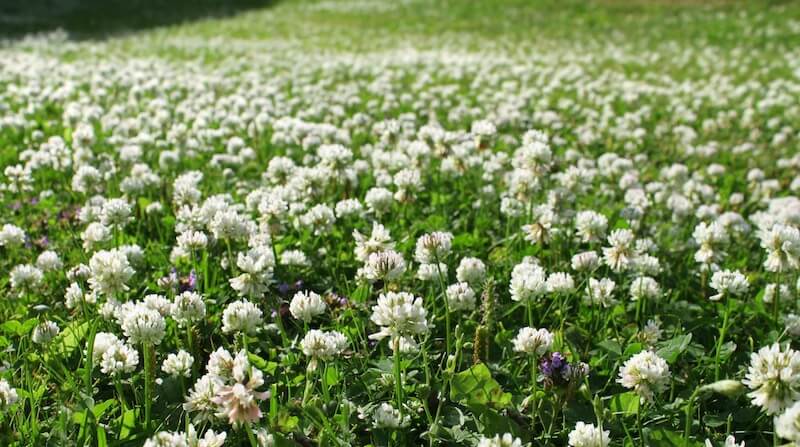
Wild, tall fescue can harbour a fungus, Festuca arundinacea, that grows within its cells. This helps make the plant hardier and grow better in poor conditions – and is typically seen along road verges in New Zealand. Symptoms in horses exposed to this plant include loss of body heat control, inhibition of milk production from lactating mares and poor appetite. It is associated with major problems during foaling, such as red bag delivery, whereby the placenta becomes thickened and covers the exit from the womb, as well as weak foals that are susceptible to infection and fail to thrive. In addition, it causes damage to the brain, with severe consequences in behaviour – and which can fatal.
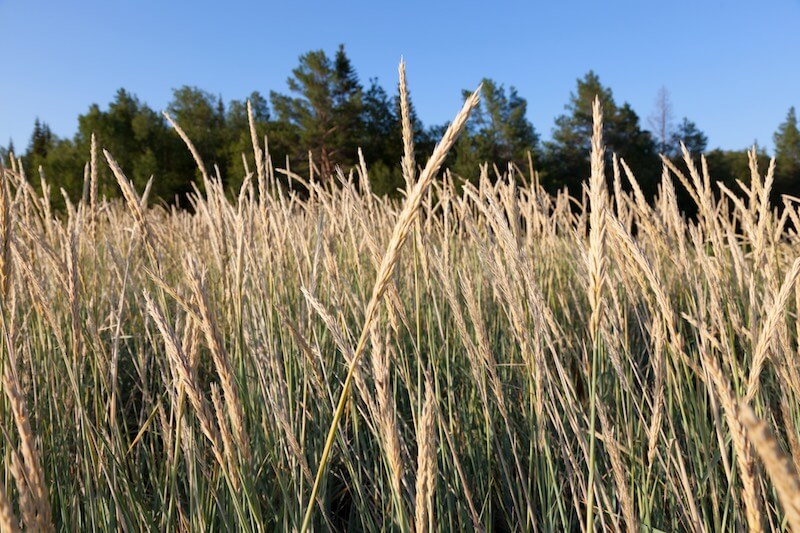
As we come into autumn, many fungi infect grasses – such as rust fungi which can be seen as an orange ‘sheen’ across the paddock. This is fusarium, which produces toxins that cause muscle tremors, loss of coordination, loss of swallowing reflex and general lethargy and depression. Lesions from the toxin damage can be seen in the brain.
Paspalum grasses can become infected with the ergot fungus Claviceps paspali, which is like LSD for horses, inducing hallucinations, loss of coordination and dry gangrene in wounds.
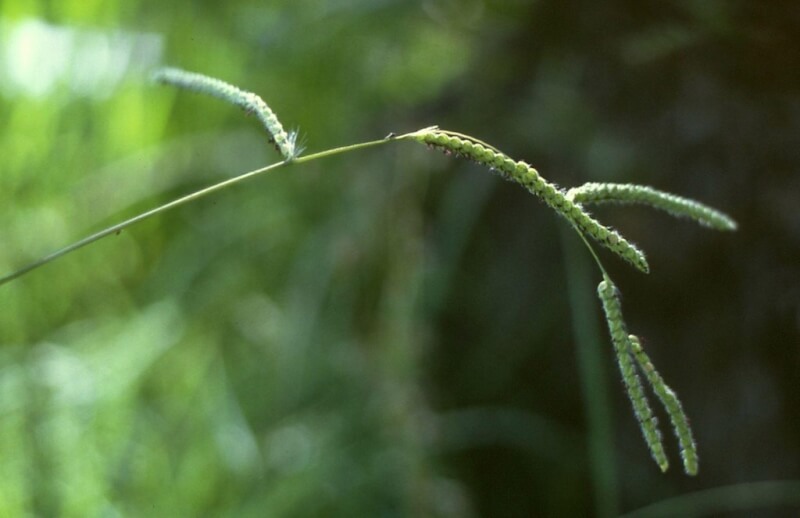
Kikuyu grasses are often grown in Northland and Auckland, as they are tropical grasses which can withstand drought. However, there is a price to pay for this ability, in that kikuyu grass contains compounds which are harmful to animals. The first are saponins (meaning ‘soap-like’) which can damage the cell walls of the beneficial bacteria in the gut, reducing digestive capacity and creating symptoms called ‘false drinking’ where the horse repeatedly goes to the trough for more and more water in an effort to dilute the saponins in its gut. Other symptoms include colic and chronic constipation. In addition, kikuyu contains oxalate compounds, which bind calcium in the gut, preventing it being absorbed into the body. This has the most noticeable impact on bone – with horses showing a softening of the edges of the bones mainly in the skull as a result of exposure to this grass for prolonged periods of time. Lack of calcium is associated with other important functions, such as muscle contraction (and may be implicated in tying up) and the immune system.

The second type of toxic plants may not be considered dangerous by many horse owners. Buttercup is seen in many pastures and can be a pain to get rid of, as it spreads underground and any bit of root left can spout again. Buttercup contains a toxin called ranunculin which causes gastric inflammation and colic. Usually, horses avoid eating buttercup due to its nasty flavour, unless the paddock is overrun with it and they have little choice in what they graze. If buttercup is dried during haymaking or included in baleage, it loses this toxicity.

False dandelion or catsear (Hypocaris radicata) is another seemingly innocent pasture dweller. In appearance, the flower is similar but the whole plant is taller and leggier than regular lawn dandelions. It is listed as a noxious weed in some countries, due to its abundance and negative impact on pastures. If it is eaten by horses, it can cause stringhalt symptoms – ie. impeded gait of the hind legs, which suggests it contains compounds related to neural toxicity.

Pennyroyal is a pretty, purple flowering plant that is abundant in certain pastures. It carries both neural and liver toxins in the oil contained in the plant. It should be sprayed off wherever it is seen.

Sandy soils encourage the growth of lupins, which have toxic seeds due to their high tannin levels. These cause problems in the gut and also are associated with breathing paralysis. There are many types of lupins which are mainly identified by colour. The sweet, white lupins have lower tannin levels than their purple counterparts, but can cause liver damage as they contain alkaloid toxins.

Last but definitely not least is that old problem of ragwort. This year has been a good year for ragwort growth, as it copes well in dry conditions. Ragwort contains alkaloid toxins which cause major liver damage – leading to sudden death if the animal is exposed to it over time, as the toxins build up in the liver. It is bitter to the taste, so animals generally avoid it when it is growing in the paddock. However, unlike buttercup, ragwort retains its toxicity in hay and silage, making it a ‘hidden threat’ for horses, as its palatability increases when dry. Look out for its characteristic frilly rosettes in spring time and spray it off or grub it out. Always use gloves when removing ragwort, as the toxins are in the sap and can penetrate through the skin.
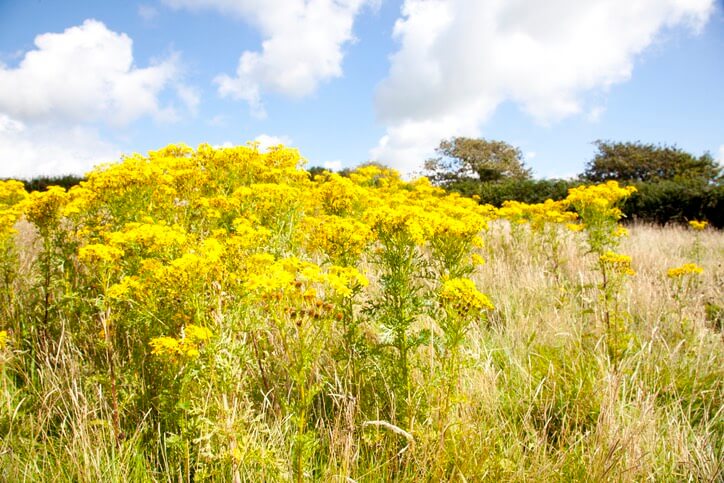
There are many toxic plants and associated fungi that can cause behaviour problems and disease in horses, so it’s always worth checking your paddocks for their presence and spraying them off. If you are looking for a strategy for managing your paddocks effectively, spraying in late autumn or in spring can control the growth of toxic weeds before they get started, reducing their ability to seed and spread. As the old saying goes, one year’s seeding, seven years’ weeding.
Many of the symptoms of the toxins in these weeds and fungi are akin to ryegrass staggers or excess sugar, so don’t always assume that your horse is suffering from these issues. If he is exhibiting such symptoms, check out the paddock thoroughly to ensure it is not something else causing the problem.








